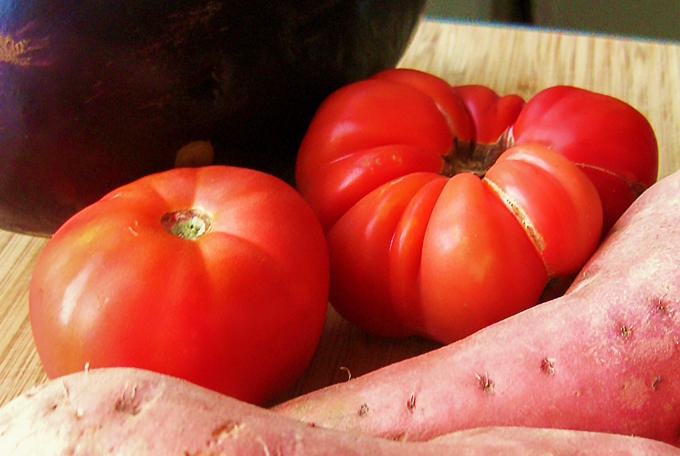
Vegetables are a surprisingly good source of calcium.
“But where do you get your calcium?”
If you’re dairy free, I’m sure you’ve heard this question. Whether from friends, family, or a stranger in the checkout line, it’s usually spoken in a scandalized tone by someone who’s clearly agog that you don’t drink milk.
I confess, the question makes me a little crazy. Because—logically speaking—why would adult humans need to drink baby-cow growth formula just to get enough calcium?
Yet I understand why people are shocked. We’re taught from day one that milk is the source of calcium in anyone’s diet. Without milk, your bones are pretty much destined to dissolve as you age, right?
I don’t know about you, but that’s the message I got.
However, when you dig into the science, an entirely different picture emerges: Multiple studies have found that drinking milk doesn’t prevent fractures at all.1,2 One study even found that drinking lots of milk increased hip fracture risk in older women.3 Ironically, taking calcium supplements is also linked to broken bones4. In fact, it looks like getting enough, but not too much calcium, is the way to go.
So, what decreases fracture risk? Fruits and veggies.5 This may be because many fruits and vegetables contain not only calcium, but magnesium, potassium, and vitamin C, which are essential to strong bones. (Vitamin D also helps prevent broken bones; you can get it from sun, supplements, and fortified foods.)
So I’ve settled on an answer to the checkout lady’s calcium question. I simply say:
I get my calcium from the same place cows do: Plants! Share on XFood for thought. 🍅
How much calcium do you really need?
Surprisingly, not that much. According to the U.S. government, women ages 19-50 need 1000 mg of calcium per day. And that estimate may be high; the U.K.’s National Health Service states that adults need only 700 mg per day.
Since I’m in the States, I’ll list the current U.S. calcium recommendations for adults. (Guidance for kids here.) But if you’re in the U.K., apparently you’re off the hook. 😉

Recommended Daily Allowances (National Institutes of Health)
Luckily, just a few of servings of calcium-rich veggies can help you get the calcium you need while powering you up with a host of health-boosting nutrients. So grab your cutting board and a good, sharp knife. Let’s dig into some calcium-rich veggies!
Note: Most calcium values that follow are per 1 cup cooked vegetable. See note in italics at the end of each vegetable entry for further details. All data from the USDA’s National Nutrient Database.
14 Calcium Rich Vegetables
1. Collard greens: 357 mg calcium
This southern staple is a calcium powerhouse! Try Superfast Hoisin Collard Greens for a quick and easy way to enjoy. (357 mg per 1 cup boiled and drained collard greens, cooked from frozen.)
2. Edamame: 261 mg calcium
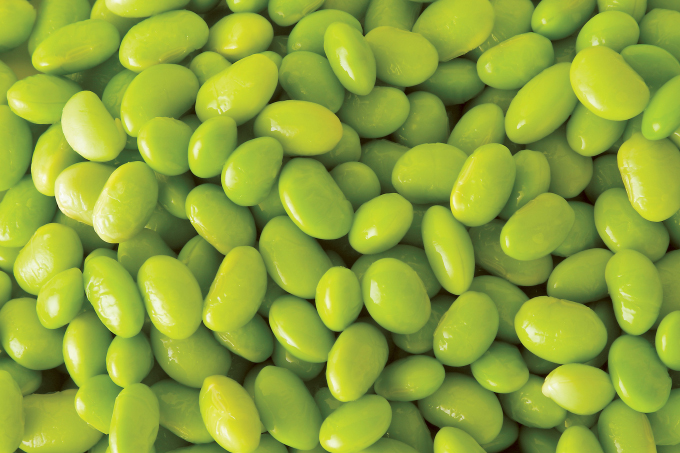
Image credit: United Soybean Board via Flickr Creative Commons
That tasty sushi-restaurant appetizer? It contains over a quarter of your daily calcium and nearly 22 grams of protein, nearly the same amount of protein as 4 eggs! (261 mg per 1 cup boiled and drained green soybeans)
3. Turnip greens: 249 mg calcium
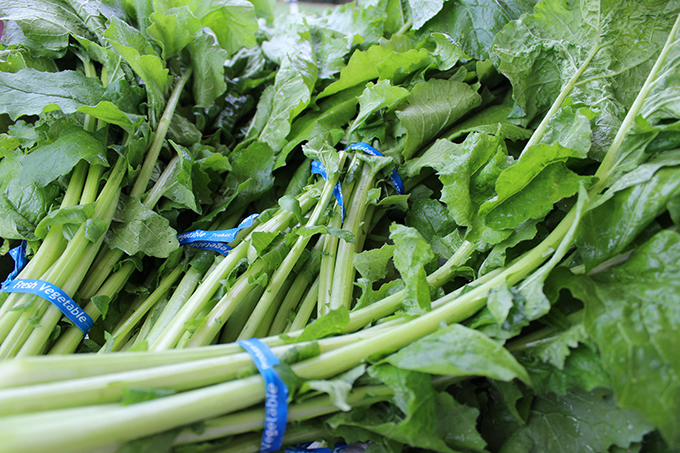
Image credit: BigOakImages via Flickr
Possibly the tastiest part of the turnip, the greens are a great source of calcium. (249 mg per 1 cup boiled and drained turnip greens, cooked from frozen)
4. Nopales: 244 mg calcium
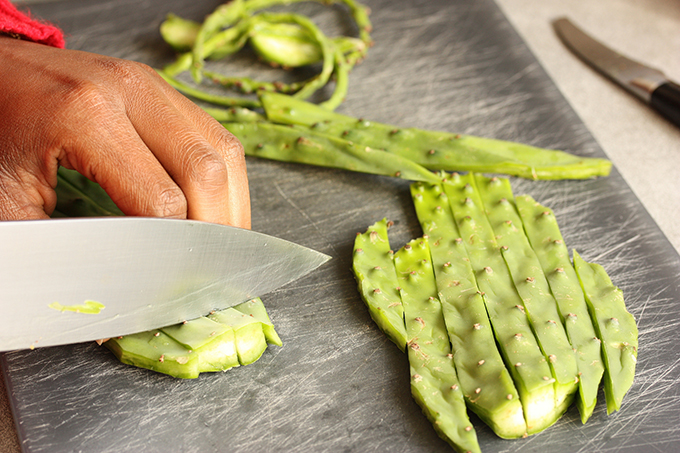
Meal Makeover Moms via Flickr
If nopales, or cactus paddles, are new to you, you’re not alone. But given how rich they are in calcium, they’re at the top of my to-try list. I’ll be starting with this scrumptious-looking Raw Papaya-Nopal Salad from Gastrawnomica. (244 mg per 1 cup cooked nopales)
5. Kale: 179 mg calcium
Kale is still cool, right? 😎 Well, when it comes to calcium, it certainly is. Think you don’t like kale? Try it in this absurdly addictive (and easy) Kale and Mango Salad with Creamy Ginger Dressing. You may just have a change of heart. (179 mg per 1 cup of boiled and drained kale; 137 mg per cup of raw chopped Scotch kale)
6. Mustard greens: 165 mg calcium
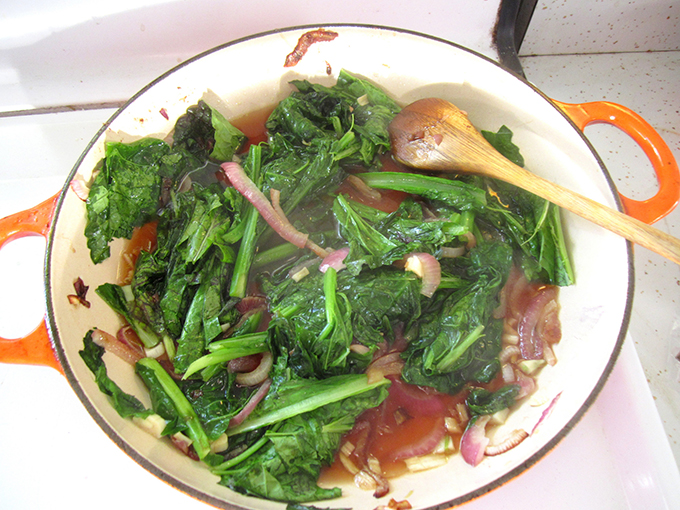
Mustard greens image credit: Amy Ross via Flickr
Slow-cooking brings out the best in calcium-rich mustard greens. I highly recommend these Vegetarian Mustard Greens from Budget Bytes. They’re tender and tasty for only $0.70 per serving. (165 mg per 1 cup of chopped, boiled, drained mustard greens)
7. Baby bok choy: 158 mg calcium
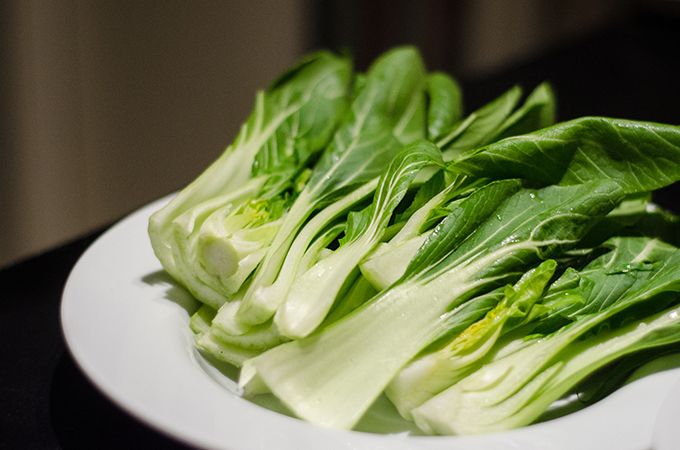
Erik Forsberg via Flickr
Also known as pak choi, baby bok choy is delicious braised, stir fried, or sliced into ribbons for salad. You can also try chopping up raw bok choy and tossing it with with grated carrots, hot brown rice or quinoa, ground flax seed, and a sprinkle of soy sauce. Easy and delicious! (158 mg per 1 cup of shredded, boiled, drained baby bok choy)
8. Dandelion greens: 147 mg calcium
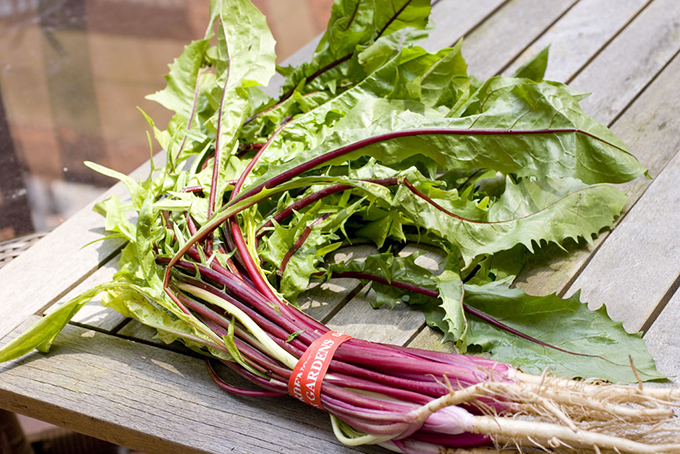
Jessica and Lon Binder via Flickr
While they’re wildly nutritious, dandelion greens can be seriously bitter. To mellow them out, blanche them in boiling water for 1 minute, then drain and rinse with cool water. Then proceed with sauteing and stir frying. (147 mg per 1 cup of chopped, boiled, drained dandelion greens)
9. Snow peas: 150 mg calcium
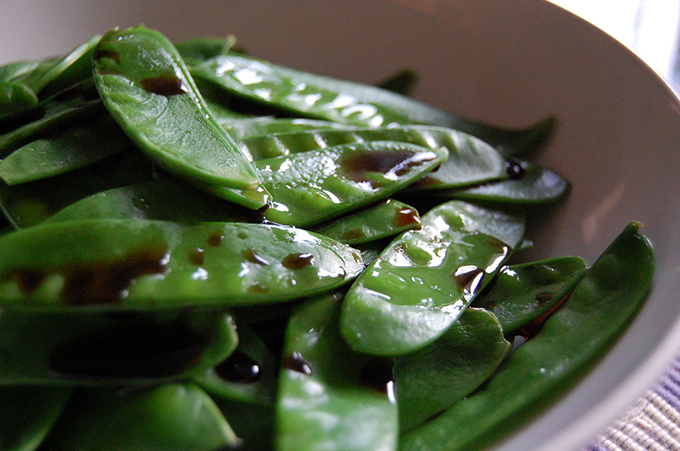
Su-Lin via Flickr
Delicious in stir-fries, snow peas—along with their cousins sugar snap peas—are a welcome addition to any veggie tray or lunch box. (150 mg per 1 cup of boiled & drained snow peas)
10. Broccoli rabe: 100 mg calcium
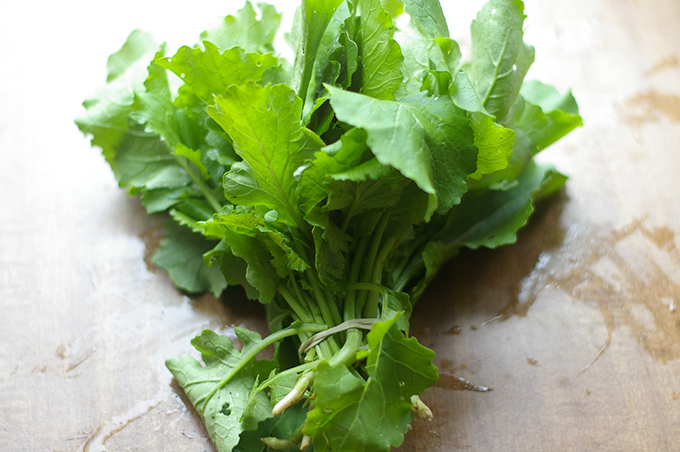
Miriam via Flickr
Pronounced “broccoli rob,” this is another vegetable I’ve never actually eaten. (In fact, I had to look up the pronunciation!) That said, I’m eager to give it a whirl in this yummy-looking potato and broccoli rabe casserole from FatFreeVegan.com. (100 mg per 1 NLEA serving of cooked broccoli rabe—about 4 stalks)
11. Acorn squash: 90 mg calcium
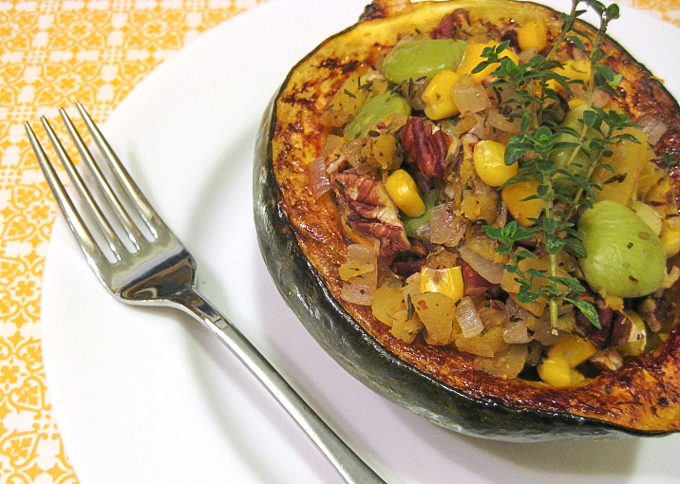
Calcium-rich acorn squash is the ultimate stuffing veggie. For an easy, tasty dinner, roast seeded acorn squash halves upside down on parchment paper or a Silpat at 375 for 45 minutes. Once tender and lightly browned, turn the halves over and fill with chili, stew, or sauteed veggies and beans. Voila: A simple, satisfying supper—with a hearty helping of calcium. (90 mg per 1 cup baked squash cubes)
12. Sweet potatoes: 89 mg calcium
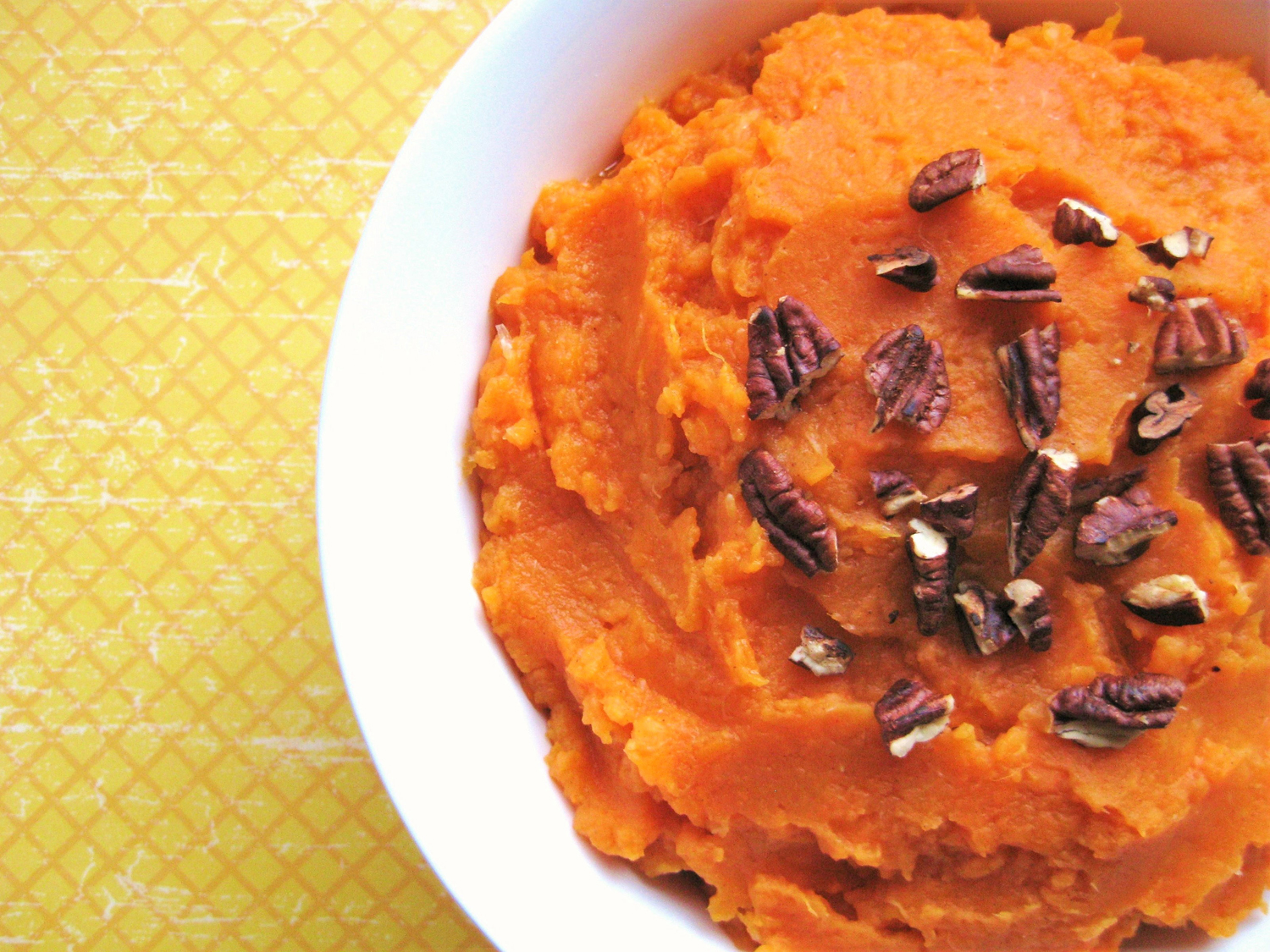
Sweet potatoes: my favorite veggie! You can easily enjoy them sliced into fries, which you can microwave with a little water or roast at 425F for 20 minutes. Of course, I proceed to dip my fries in an absurd amount of ketchup, but that’s optional. 😉 I also love baked sweet potatoes smashed open and smothered with copycat vegan Hidden Vallen ranch dressing. Yum! (89 mg per 1 cup boiled and mashed sweet potato, without skin)
13. Stewed tomatoes: 87 mg calcium
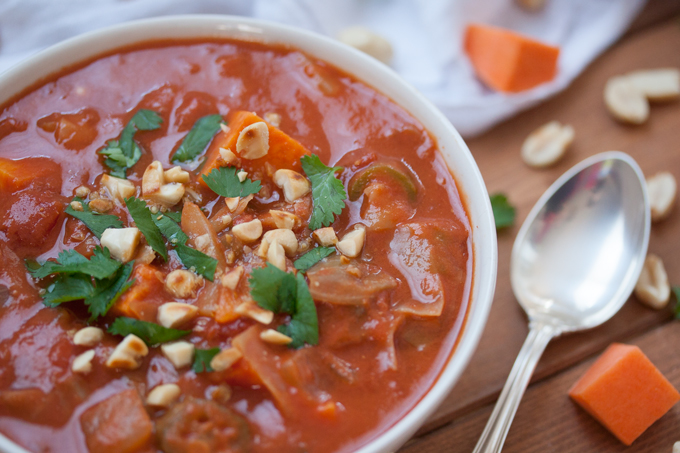
If you’re a chili fan, you’re in luck: Stewed tomatoes have a nice dose of calcium. Not a chili fan? Try Peanut-Sweet Potato Stew. You’ll get an added calcium boost from the sweet potatoes. (87 mg per 1 cup canned, stewed tomatoes)
14. Butternut squash: 84 mg calcium
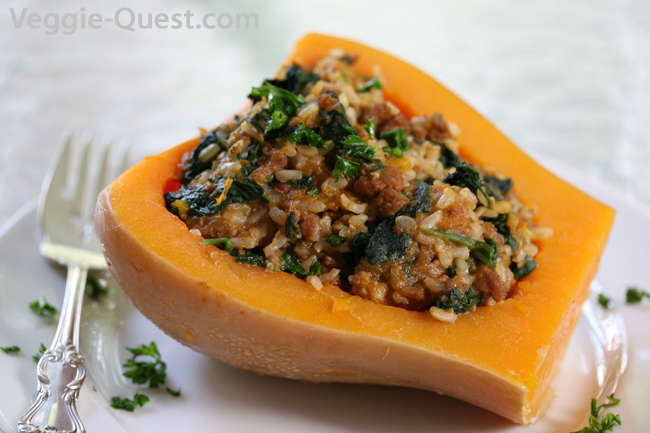
Who knew sweet, creamy butternut squash was a calcium king? You’ll love it in this meatless Stuffed Butternut Squash recipe from Rock My Vegan Socks, pictured above. (84 mg per 1 cup baked squash cubes)
Where’s the spinach?
I can hear the nutrition buffs now: But spinach has lots of calcium! Where is it?
You’re right, spinach does have loads of calcium. But it also has lots of oxalate, which blocks your body from absorbing calcium. And that means most of the calcium from spinach ends up in your 💩. (Oh yes she did.)
So while spinach is nutritious for about a thousand other reasons, calcium isn’t one of them.
Where will you get your calcium?
Dark leafy greens like collards sauteed with garlic and onions? Or maybe scrumptious butternut squash roasted until tender with cumin? Whatever you decide, your bones—and the rest of your body—will thank you.

Pin this handy guide for later!
Your turn:
- Are you dairy free: What was your #1 reason for giving up milk?
- Feskanich D, Willett WC, Colditz GA. Calcium, vitamin D, milk consumption, and hip fractures: a prospective study among postmenopausal women. Am J Clin Nutr. 2003 Feb;77(2):504-11. http://ajcn.nutrition.org/content/77/2/504.long
- Sonneville KR, Gordon CM, Kocher MS, Pierce LM, Ramappa A, Field AE. Vitamin D, Calcium, and Dairy Intakes and Stress Fractures Among Female Adolescents. Arch Pediatr Adolesc Med. 2012;166(7):595-600. doi:10.1001/archpediatrics.2012.5.
- Michaëlsson K, Wolk A, Langenskiöld S, et al. Milk intake and risk of mortality and fractures in women and men: cohort studies. The BMJ. 2014;349:g6015. doi:10.1136/bmj.g6015.
- Bischoff-Ferrari HA, Dawson-Hughes B, Baron JA, et al. Calcium intake and hip fracture risk in men and women: a meta-analysis of prospective cohort studies and randomized controlled trials. Am J Clin Nutr. 2007;86(6):1780-90. http://ajcn.nutrition.org/content/86/6/1780.full
- Byberg L, Bellavia A, Orsini N, Wolk A, Michaëlsson K. Fruit and vegetable intake and risk of hip fracture: a cohort study of Swedish men and women. J Bone Miner Res. 2015 Jun;30(6):976-84. doi: 10.1002/jbmr.2384.
Shared on the Healthy Living Link Party, Allergy Free Thursdays, Plant Based Potluck Party, Healthy Vegan Fridays, Gluten Free Fridays, and Real Food Fridays.
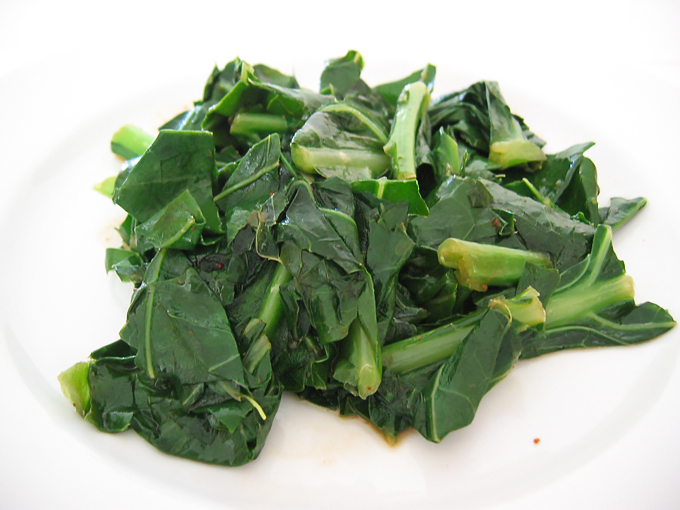
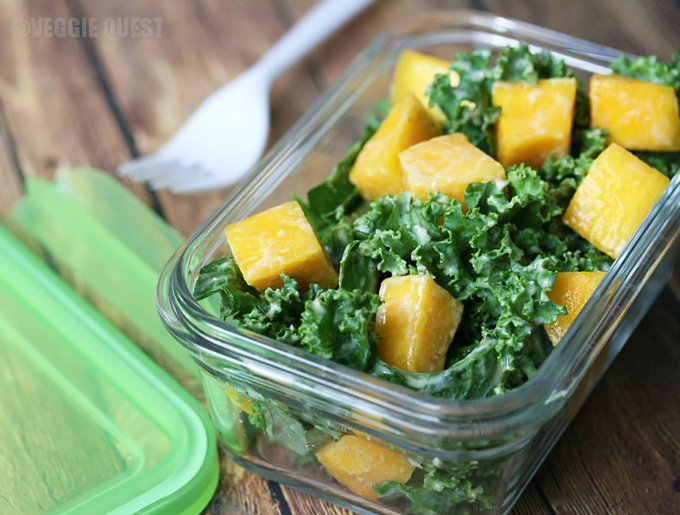
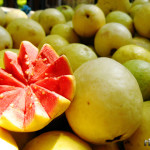
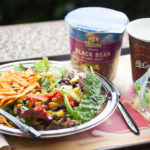
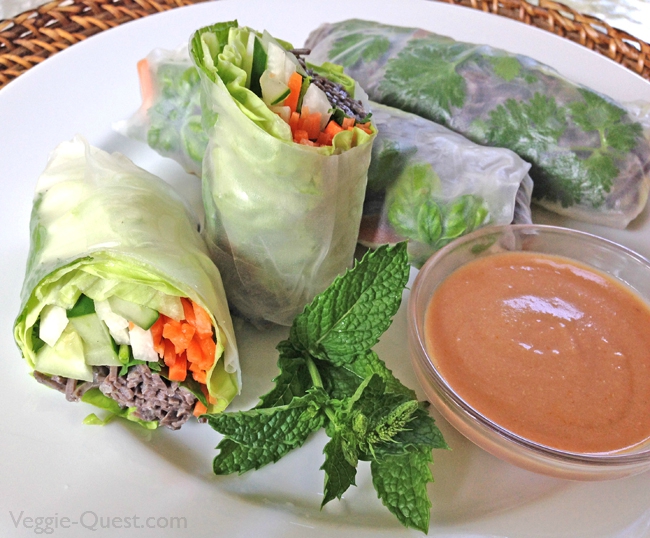

 I'm Lee, an RD thriving on a healthy plant based diet.
I'm Lee, an RD thriving on a healthy plant based diet.
While I knew greens in general were good sources of calcium I wasn’t aware of how much there’s in each. Unfortunately, we can’t find most of those foods you listed over here. An unfair advantage for US vegans, I’d say ;).
Personally, I find iron trickier and that’s also what non-vegs are most doubtful about here. So if you felt like writing a post on that …
By the way: your quick answer to the calcium question is great!
I’m so bummed you can’t get a lot of these veggies where you are. (Germany, right?) Anyhow, from what I’ve seen, if it’s dark green or bright orange, it’s probably a good source of calcium. (Bonus points if it’s dark green AND in the cabbage family.) 😉
And I’d love to write a post on iron-rich veggies! I’ll start on it this weekend, fun! It’s so funny, my iron levels are better on a plant-based diet than they were in my omnivore days. But you’re right, people–especially doctors–worry that I don’t get enough. Frustrating. I’ll get on the iron-rich veggie list stat!
Great post! People ask me about calcium a lot so this is a great post to point them too!
I just had cactus tacos a week or two ago – excited I had more calcium that day!
Thanks Mary Ellen! I know you know a lot about nutrition, so I’m honored that you’d be willing to point people towards this post with their vegan calcium questions. 🙂
And cactus tacos! So fun and apropos! I might stop by Pinterest later to see if I can find a good recipe. (Unless you have one?) Also, did you make them yourself? I confess, I’m still a little scared to try my hand at cooking cactus paddles–would love tips!
I wish I cooked them but alas, I had them at a Mexican restaurant. Next time I go there I’ll ask how they are cooked!
I’m trying to share other people’s content on Facebook more so I’ll definitely share this post and your cherry ice cream and a few others soon if that’s okay. 🙂
Ooh, please report back if you remember to ask!
And I would be DELIGHTED to have you share my stuff on Facebook. I’d love to share your recipes too; I’ve been a little lax on social media lately! In fact, I may shoot you an email just in case you don’t see this to get a list of your oil-free recipes, because I know Veggie Quest readers would be interested.
Wonderful! 🙂
We always love having you link up with us for #HealthyVeganFridays! I’m Pinning and sharing!
Thanks Lee! What a scrumptious array of green and orange options!! I love nearly all of them and it’s a good reminder to have yet another reason to. My neighbor is growing stellar collards and I will have to hit her up for some. 🙂 The nopales is new to me, too. Might have to try that sometime when I come across it. And the mango kale salad looks wonderful! xo
Thanks Maria! I knew that greens were a great source of calcium when I wrote the post, but I was surprised to see tomatoes and squash were decently rich in calcium too.
It couldn’t hurt to drop a hint to your neighbor, right? Jeff and I actually planted some collards a little late this year, so they’re still in that gawky “teenager” stage with long stalks and sort of skinny leaves, but they’re starting to fill out. Can’t wait til they’re ready to eat. Lots of calcium and deeee-licious!
I just realized I never answer my own “Your Turn” question! Well, here goes:
I had two breast biopsies (both benign, but a little shady) in my early 30s. While studies don’t implicate milk in breast cancer specifically, milk DOES drive up levels of IGF-1. And IGF-1 is a growth factor that encourages cells to grow, grow, grow. Since I don’t want cells in my breasts multiplying, I decided to stay on the safe side and ditch dairy! (Side note: Milk intake IS directly linked to both prostate and ovarian cancer risk.) More info here: http://www.pcrm.org/health/diets/vegdiets/health-concerns-about-dairy-products
HI Lee,
I love the stuffed butternut squash recipe. I not familiar with the Nopal, but I do love those sweet potatoes which I knew has a lot of nutritional value including calcium. I got to admit I am not a Vegan or do I believe that it is a healthy choice for most people. I believe every one body is different and all foods are provided for our use as we need them. I think the biggest problem I have conventional milk is that it is loaded with hormones, antibiotics and many other chemicals and when they pasteurize they take out all the natural value of nutrition . We only use raw milk, but I also think that a personal choice and not every one has to believe as I do. I think your article was informative and valuable. Calcium is important but as your article clearly points out your don’t need to get it from milk – many vegetables are loaded with. Thanks for sharing on Real Food Fridays. Pinned & tweeted!.
Hi Marla, I’m glad you found the article useful! I agree that conventional milk is problematic, although organic milk surprisingly contains more estrogen than conventional milk. So for women with breast issues, it might not be the best choice. Milk is also linked to increased risk of ovarian and prostate cancer, so my husband and I both avoid it. (Although I’m guessing those cancer studies looked at conventional milk.)
On a more personal note, I had a stable breast lesion DOUBLE in size when I went from a mostly vegan diet to a fully omnivorous diet over a period of only 4 months back in 2011-2012. Thankfully my pathology report came back benign (although slightly spooky, with mild atypia). Since I’d rather not have another lumpectomy anytime soon, I’ll stick with my plant-based diet, as you can imagine. 🙂 And I think we can all agree that people would do well to eat less refined junk and more whole plants, regardless of what diet style they choose!
Ooo, nopales! Had cactus fries in Sedona a while ago. Yummm. Unfortunately not available in Canada 🙁
Cactus fries? Sweet! I still haven’t tried nopales, but I keep eyeing them every time I go to the grocery store. Bummer that you can’t get them in Canada!
OMG I’m pretty tired of people asking me where I get anything (calcium, protein, etc). It’s super annoying, when I’m probably healthier than them as I was way less healthy before going vegan. I feel like when you decide to go plant-based (and do it in a healthy way), you become much more conscious of your food and are sure you are getting all of the nutrients you need.
I knew most of these, but baby bok choy was new and that’s my FAVOURITE!!! It’s so good. I find myself snacking on it when I’m making it for supper haha ;p
Great article and tips Lee! And thanks for linking up my recipe – is that a picture of when you made it?????
Hi Kimmy, I know, the questions get old, right? I try to remind myself that at least people are curious! And that maybe I’m planting seeds about the benefits of plant-based eating. Of course, on a bad day, all I can think is “really”???
I love baby bok choy too! I eat it with my breakfast sometimes, which is weird, but very refreshing with fresh fruit and hot cereal, yum.
Yup, that’s a picture of when I made your stuffed squash recipe. I used Beyond Meat crumbles instead of the tempeh bacon, because soy isn’t my bestie, and it came out great! (Although I added some of the flavorings you used on your tempeh to make the Beyond Meat more bacon-y). My hubby and parents all love it! It feels fancy for special occasions, although it’s easy enough to make any time. 🙂
WOWZERS! Your picture turned out way better than mine haha ;p I need to work on my food photography.
I’m so glad you liked it!
I feel like as a nutritionist, I should just know all of the health benefits of everything… but I can’t remember everything. It’s really good to get reminders of how awesome everything is =)
Baby bok choy for breakfast? I haven’t tried that yet, I’ll add it to the list!
Most of these are my favorite foods so I eat them quite often. It’s so good to make sure we get enough plant-based calcium so thank you for sharing 14 Calcium Rich Vegetables with us at the Plant-Based Potluck Party. I’m pinning and sharing.
Thanks for the kind words, Deborah, and thanks for featuring this post on the Plant-Based Potluck Party! That always makes my day! 🙂
Hi Lee, thank you for the great list of calcium-rich foods. I am wondering if broccoli fits into the list anywhere? I also love your answer about where you get your calcium :). You asked about why others are giving up dairy – I have developed mucus-build-up issues which I feel is in part from consuming dairy products but as I am almost 60 I want to be mindful of getting enough calcium through other sources. I love how you also included a visual summary of the calcium-rich foods at the end of the post.